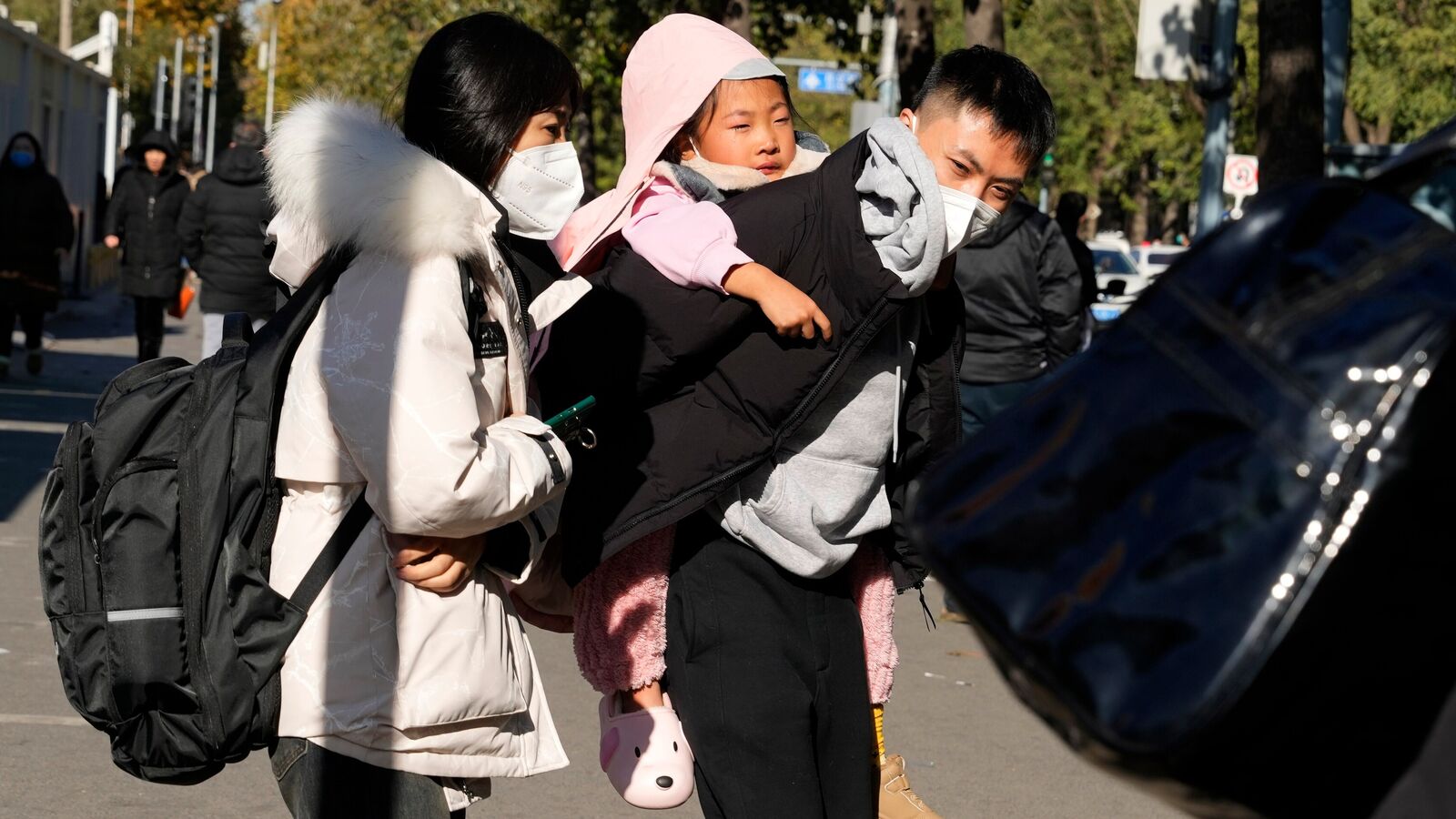Infection
What’s led to surge in respiratory illnesses in China: Lifting COVID norms, cold season, lack of immunity, or new virus?
1.Overlap of common viruses
China’s National Health Commission spokesperson said on Sunday that acute respiratory diseases continue to rise in the country and that it is being caused by the flu and other known pathogen.
“Recent clusters of respiratory infections are caused by an overlap of common viruses such as the influenza virus, rhinoviruses, the respiratory syncytial virus, or RSV, the adenovirus as well as bacteria such as mycoplasma pneumoniae, which is a common culprit for respiratory tract infections,” the National Health Commission spokesperson was quoted by the Associated Press as saying.
The WHO said earlier the Chinese authorities had reported an increase in incidence of respiratory diseases in China at a press conference on November 13. The global health agency said Chinese health officials on Thursday provided the data it requested during a teleconference.
According to a WHO statement, Beijing responded to the request, saying “there has been no detection of any unusual or novel pathogens,” AFP reported. The data reportedly showed an increase in hospital admissions of children due to diseases including bacterial infection, RSV, influenza and common cold viruses since October.
ALSO READ: Centre asks states to review hospital preparedness amid China pneumonia scare, says ‘no need for alarm’
The WHO has now requested more information, noting that China closely monitors trends in viruses such as the flu, RSV and SARS-CoV-2. Meanwhile, experts also suggested there is little to suggest the cases were caused by a new virus.
2. Lifting COVID lockdown and cold season
China also linked rising infections to the arrival of the first full cold season after strict COVID restrictions were lifted last December, reports said.
On November 22, the WHO cited Chinese authorities as attributed the surge “to the lifting of COVID-19 restrictions and the circulation of known pathogens such as influenza, mycoplasma pneumoniae (a common bacterial infection which typically affects younger children), respiratory syncytial virus (RSV), and SARS-CoV-2 (the virus that causes COVID-19)”.
What do experts think?
Several experts said winter’s arrival, the end of COVID restrictions, and a lack of prior immunity in children might be responsible for the surging infections. It was feared that due to long COVID lockdowns, China residents might not have developed natural immunity against the virus.
“Since China experienced a far longer and harsher lockdown than essentially any other country on Earth, it was anticipated that those ‘lockdown exit’ waves could be substantial in China,” said Francois Balloux of University College London, was quoted by news agency AFP as saying.
Meanwhile, Catherine Bennett of Australia’s Deakin University pointed out that “young children in school in China will have spent up to half their life without the usual exposure to common pathogens, and so do not have the same levels of immunity”.
Besides this, China-based media Global Times cited an expert with China’s Center for Disease Control and Prevention as saying that the main pathogens prevalent in respiratory infectious diseases differ according to the different age groups affected. It
> 0-4 years: Influenza virus, rhinovirus
> 5-14 years: influenza virus, mycoplasma pneumonia, adenovirus
> 15-59 years: Influenza virus, rhinovirus, coronavirus
> Aged 60 and above: Influenza virus, human metapneumovirus, coronavirus
According to internal accounts in China, the outbreaks have swamped some hospitals in northern China, including in Beijing, the Associated Press reported.
It added that health authorities have asked the public to take children with less severe symptoms to clinics and other facilities.
ALSO READ: China pneumonia outbreak: From symptoms to precautions, all you need to know
A new epidemic in sight?
As the reports of rising infection in China triggered memories of the pandemic, Paul Hunter of the UK’s University of East Anglia said, “… this does not sound to me like an epidemic due to a novel virus.”
“If it was, I would expect to see many more infections in adults. The few infections reported in adults suggest existing immunity from a prior exposure,” he was quoted by AFP as saying.
The emergence of new flu strains or other viruses capable of triggering pandemics typically starts with undiagnosed clusters of respiratory illness. Both SARS and COVID-19 were first reported as unusual types of pneumonia.
The WHO said that there was too little information at the moment to properly assess the risk of these reported cases of respiratory illness in children.
Both Chinese authorities and WHO have been accused of a lack of transparency in their initial reports on the COVID-19 pandemic, which started in the central Chinese city of Wuhan in December 2019.
(With inputs from agencies)
Milestone Alert!
Livemint tops charts as the fastest growing news website in the world 🌏 Click here to know more.
Related Premium Stories
Download The Mint News App to get Daily Market Updates.
More
Less
Updated: 26 Nov 2023, 07:44 PM IST

